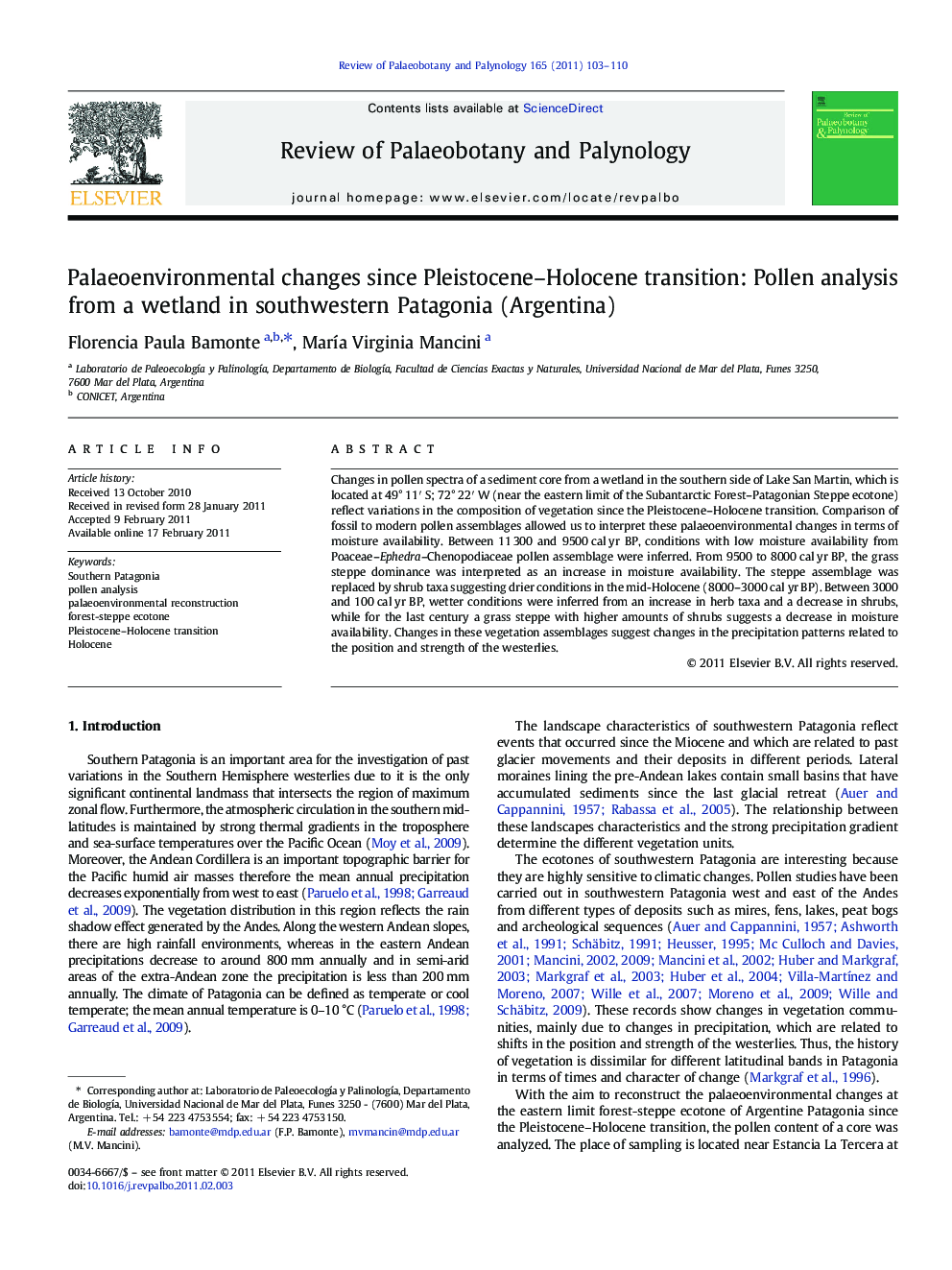| Article ID | Journal | Published Year | Pages | File Type |
|---|---|---|---|---|
| 4750576 | Review of Palaeobotany and Palynology | 2011 | 8 Pages |
Changes in pollen spectra of a sediment core from a wetland in the southern side of Lake San Martin, which is located at 49° 11′ S; 72° 22′ W (near the eastern limit of the Subantarctic Forest–Patagonian Steppe ecotone) reflect variations in the composition of vegetation since the Pleistocene–Holocene transition. Comparison of fossil to modern pollen assemblages allowed us to interpret these palaeoenvironmental changes in terms of moisture availability. Between 11 300 and 9500 cal yr BP, conditions with low moisture availability from Poaceae–Ephedra–Chenopodiaceae pollen assemblage were inferred. From 9500 to 8000 cal yr BP, the grass steppe dominance was interpreted as an increase in moisture availability. The steppe assemblage was replaced by shrub taxa suggesting drier conditions in the mid-Holocene (8000–3000 cal yr BP). Between 3000 and 100 cal yr BP, wetter conditions were inferred from an increase in herb taxa and a decrease in shrubs, while for the last century a grass steppe with higher amounts of shrubs suggests a decrease in moisture availability. Changes in these vegetation assemblages suggest changes in the precipitation patterns related to the position and strength of the westerlies.
Research highlights► During the P–H transition, a dwarf-shrub steppe under arid conditions developed. ► The reconstructed steppe communities of the Holocene resemble the present day ones. ► A grass steppe during the early and late Holocene suggests high moisture availability. ► During the mid-Holocene an increment in shrubs indicates low moisture availability. ► Changes in the vegetation suggest changes in the precipitations patterns.
